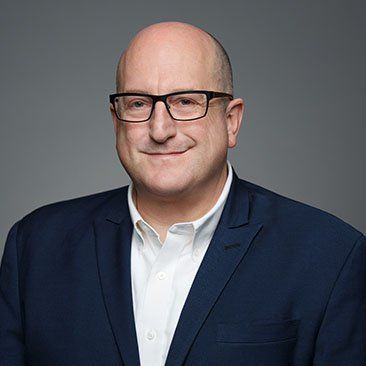Walgreens-AmerisourceBergen Deal: 3 Takeaways
Retail drug chain giant Walgreens made a takeover approach to drug distributor AmerisourceBergen. Here’s what industry watchers want you to know about it.
In February, Walgreens Boots Alliance Inc.-the largest U.S. drugstore operator, made a takeover approach to drug distributor AmerisourceBergen Corp.
Although Walgreens denied Managed Healthcare Executive’s request for an interview, industry experts weighed in with three takeaways from the deal:
- The move is an effort to stay competitive. Walgreens, like other traditional players in healthcare, is reacting to the potential havoc Amazon and other tech giants could inflict on its business. “It’s bulking up like its competitors,” says David Friend, MD, MBA, chief transformation officer and managing director, The BDO Center for Healthcare Excellence & Innovation, a healthcare risk advisory firm. Amazon has already secured drug-wholesaler licenses in more than a dozen states, signaling its inevitable entrance into the mail-order pharmacy business. In January, Amazon announced that it’s creating a healthcare organization with JPMorgan and Berkshire Hathaway to tackle employee healthcare costs. On Feb. 13, Amazon announced that it is ramping up its medical supply business.
The Walgreens-AmerisourceBergen deal would streamline its supply chain and enable it to cut costs. “We expect these types of mergers to continue at a clipping pace,” Friend says. In a recent survey BDO conducted with NEJM Catalyst, 81% of healthcare leaders at organizations directly involved in care delivery said they expect innovative mergers to continue disrupting the industry in the next three years. Forty-two percent predicted Amazon specifically would have a “significant impact” on healthcare. Others predicted to have such impact were CVS-Aetna (50%), Optum-DaVita (33%), Google (27%), and Apple (22%).

Chambers
2. The approach reflects a move toward vertical consolidation. The move toward having consumers cover out-of-pocket costs, coupled with consumer demand for pricing transparency, is driving much of the consolidation in the market, says Anthony Chambers, a director in the healthcare and life sciences practice at West Monroe Partners, a business and technology consulting firm. “The old consolidation model of horizontal integration to gain efficiencies has either not panned out or has been stopped by regulation,” he says. “Consequently, vertical integrations are now in play. If horizontal integrations promised less friction across the value chain, vertical integration would seem to prioritize speed to delivery over market size."
Additionally, value-based care has had the unintended consequence of increasing drug prices in some cases. Although specialty drugs, biologics, and gene therapies have hit the market at a premium, they do work really well. “Many of these drugs require complex administration and support, which is driving growth in the specialty pharmacy market,” Chambers says. “Pharmacy benefit managers (PBMs) and pharmacies are seeing erosion of their top line.”
3. Numerous effects on the pharmaceutical industry will occur. A combined company, and others like it, could also mean less concern around supply chain risk for drug manufacturers and distributors as well as their partners on the care continuum, Friend says. Nearly all (97%) of the largest 100 companies listed on the NASDAQ Biotechnology Index cited supply chain concerns as a risk to business in their most recent 10-K filings, according to the 2017 BDO Life Sciences RiskFactor Report. Those concerns included issues with product manufacturers and distributors around product quality, shipping, availability, and costs. If more drug distributors join forces with their drug manufacturers, they’ll have a clearer window into product quality, availability, and prices. This could lead to a safer, more reliable and more efficient supply chain for the entire industry.

Friend
Chambers says that drug coupons and rebates, a core source of PBM income, are drying up as drug manufacturers look to different innovative sales and marketing channels. Some drug companies are creating exclusive partnerships with specialty pharmacies to deliver to patients. In some cases, they are creating standalone specialty pharmacy entities that only serve their drug product portfolios. “These ‘alternative verticals’ present an almost direct-to-consumer drug product delivery,” he says. “We haven’t seen it yet, but the next step for the alternative verticals would be an expansion of partnerships into the payer side.”
Karen Appold is a medical writer in Lehigh Valley, Pennsylvania.
Extending the Capabilities of the EHR Through Automation
August 2nd 2023Welcome back to another episode of "Tuning In to the C-Suite," where Briana Contreras, an editor of Managed Healthcare Executive, had the pleasure of chatting with Cindy Gaines, chief clinical transformation officer at Lumeon.
Listen
Upended: Can PBM Transparency Succeed?
March 6th 2024Simmering tensions in the pharmacy benefit management (PBM) industry have turned into fault lines. The PBMs challenging the "big three" have formed a trade association. Purchaser coalitions want change. The head of the industry's trade group says inherent marketplace friction has spilled over into political friction.
Read More
Florida Gets the OK. But Will Drug Importation from Canada Actually Happen?
March 5th 2024Canadian health officials warn that maintaining a drug supply for Canadians is their priority. The staunch opposition of the U.S. pharmaceutical industry may also be an obstacle to imports from north of the border.
Read More